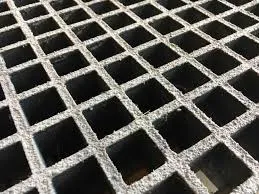
-
 Afrikaans
Afrikaans -
 Albanian
Albanian -
 Amharic
Amharic -
 Arabic
Arabic -
 Armenian
Armenian -
 Azerbaijani
Azerbaijani -
 Basque
Basque -
 Belarusian
Belarusian -
 Bengali
Bengali -
 Bosnian
Bosnian -
 Bulgarian
Bulgarian -
 Catalan
Catalan -
 Cebuano
Cebuano -
 China
China -
 China (Taiwan)
China (Taiwan) -
 Corsican
Corsican -
 Croatian
Croatian -
 Czech
Czech -
 Danish
Danish -
 Dutch
Dutch -
 English
English -
 Esperanto
Esperanto -
 Estonian
Estonian -
 Finnish
Finnish -
 French
French -
 Frisian
Frisian -
 Galician
Galician -
 Georgian
Georgian -
 German
German -
 Greek
Greek -
 Gujarati
Gujarati -
 Haitian Creole
Haitian Creole -
 hausa
hausa -
 hawaiian
hawaiian -
 Hebrew
Hebrew -
 Hindi
Hindi -
 Miao
Miao -
 Hungarian
Hungarian -
 Icelandic
Icelandic -
 igbo
igbo -
 Indonesian
Indonesian -
 irish
irish -
 Italian
Italian -
 Japanese
Japanese -
 Javanese
Javanese -
 Kannada
Kannada -
 kazakh
kazakh -
 Khmer
Khmer -
 Rwandese
Rwandese -
 Korean
Korean -
 Kurdish
Kurdish -
 Kyrgyz
Kyrgyz -
 Lao
Lao -
 Latin
Latin -
 Latvian
Latvian -
 Lithuanian
Lithuanian -
 Luxembourgish
Luxembourgish -
 Macedonian
Macedonian -
 Malgashi
Malgashi -
 Malay
Malay -
 Malayalam
Malayalam -
 Maltese
Maltese -
 Maori
Maori -
 Marathi
Marathi -
 Mongolian
Mongolian -
 Myanmar
Myanmar -
 Nepali
Nepali -
 Norwegian
Norwegian -
 Norwegian
Norwegian -
 Occitan
Occitan -
 Pashto
Pashto -
 Persian
Persian -
 Polish
Polish -
 Portuguese
Portuguese -
 Punjabi
Punjabi -
 Romanian
Romanian -
 Russian
Russian -
 Samoan
Samoan -
 Scottish Gaelic
Scottish Gaelic -
 Serbian
Serbian -
 Sesotho
Sesotho -
 Shona
Shona -
 Sindhi
Sindhi -
 Sinhala
Sinhala -
 Slovak
Slovak -
 Slovenian
Slovenian -
 Somali
Somali -
 Spanish
Spanish -
 Sundanese
Sundanese -
 Swahili
Swahili -
 Swedish
Swedish -
 Tagalog
Tagalog -
 Tajik
Tajik -
 Tamil
Tamil -
 Tatar
Tatar -
 Telugu
Telugu -
 Thai
Thai -
 Turkish
Turkish -
 Turkmen
Turkmen -
 Ukrainian
Ukrainian -
 Urdu
Urdu -
 Uighur
Uighur -
 Uzbek
Uzbek -
 Vietnamese
Vietnamese -
 Welsh
Welsh -
 Bantu
Bantu -
 Yiddish
Yiddish -
 Yoruba
Yoruba -
 Zulu
Zulu
Durable Fiberglass Liner Solutions for Enhanced Stack Performance and Longevity
Understanding Fiberglass Stack Liners A Durable Solution for Industrial Emissions
In the realm of industrial operations, the management of emissions is paramount. One of the key components in this endeavor is the use of stack liners. Among various materials used for stack liners, fiberglass has emerged as a popular choice due to its numerous advantages. This article will delve into the benefits, applications, and considerations associated with fiberglass stack liners.
Fiberglass stack liners are primarily used to protect the interior surfaces of stack systems from corrosive gases and particulate matter. These liners are composed of woven fiberglass fabrics that are coated with a resin, resulting in a lightweight yet exceptionally strong material. The unique properties of fiberglass make it well-suited for high-temperature and corrosive environments commonly found in industries such as power generation, petrochemical processing, and waste incineration.
Key Benefits of Fiberglass Stack Liners
1. Corrosion Resistance One of the most significant advantages of fiberglass stack liners is their resistance to corrosion. Many industrial processes emit gases such as sulfur dioxide, hydrochloric acid, and nitrogen oxides, which can severely damage conventional metal liners over time. Fiberglass, on the other hand, is inherently resistant to these corrosive substances, thereby extending the life of the stack system and reducing maintenance costs.
2. Lightweight and Easy to Install Fiberglass stack liners are considerably lighter than their metallic counterparts, making them easier to handle and install. This can lead to reduced labor costs and shorter installation times, which is especially beneficial for industries aiming to minimize downtime during maintenance or upgrades.
3. High Temperature Tolerance The ability of fiberglass to withstand high temperatures without losing structural integrity is another reason for its popularity. Many industrial processes involve high heat, and fiberglass stack liners can typically endure temperatures ranging from 300°F to over 1,000°F, depending on the specific resin used.
4. Versatility Fiberglass stack liners can be manufactured in various shapes and sizes, making them suitable for different types of stacks and emissions systems. Their adaptability ensures that they can meet specific operational requirements while maintaining efficiency.
fiberglass stack liner

Applications of Fiberglass Stack Liners
The versatility of fiberglass stack liners allows them to be utilized in a wide range of applications, including
- Power Plants Both coal-fired and natural gas plants require effective emissions solutions. Fiberglass stack liners protect against the detrimental effects of flue gases, thereby enhancing the longevity of the stacks.
- Chemical Processing Facilities The aggressive nature of chemicals processed in these facilities necessitates reliable protective measures for stack systems. Fiberglass liners mitigate the risk of chemical corrosion.
- Incineration Units Waste-to-energy plants that incinerate materials produce highly corrosive gases. Fiberglass stack liners provide an essential defense mechanism.
Considerations and Maintenance
Despite the many benefits of fiberglass stack liners, proper installation and maintenance are critical to ensure optimal performance. Factors such as environmental conditions, the nature of the emissions, and the specific design of the stack must be taken into account. Regular inspections can help identify any potential wear or damage, allowing for timely repairs or replacements.
In conclusion, fiberglass stack liners represent a robust solution for managing industrial emissions. Their resistance to corrosion, high-temperature tolerance, lightweight nature, and versatility make them an ideal choice for various industries. As environmental regulations tighten and the need for efficient emissions management grows, fiberglass stack liners are likely to play an increasingly vital role in protecting both equipment and the environment.









